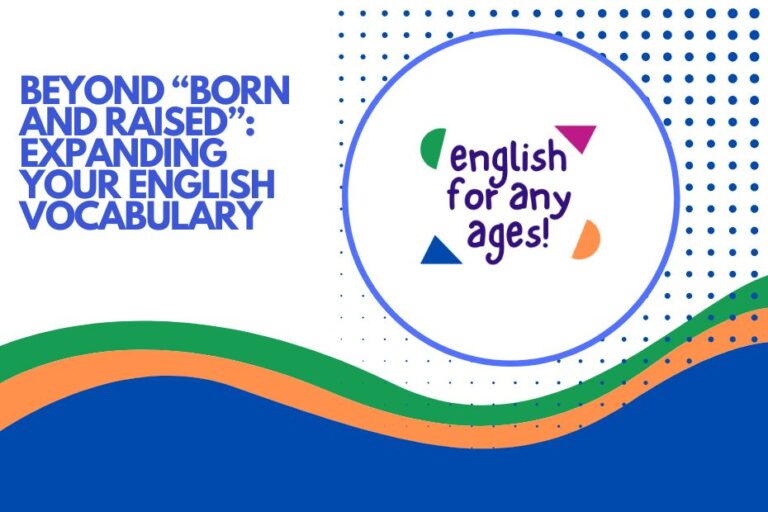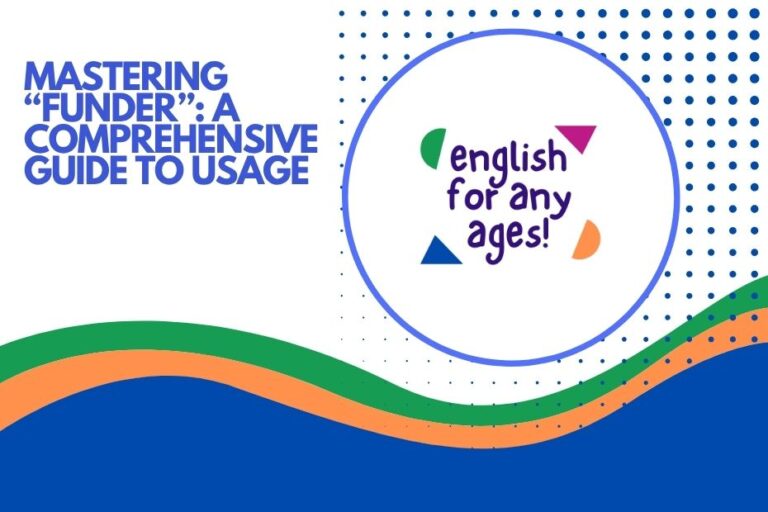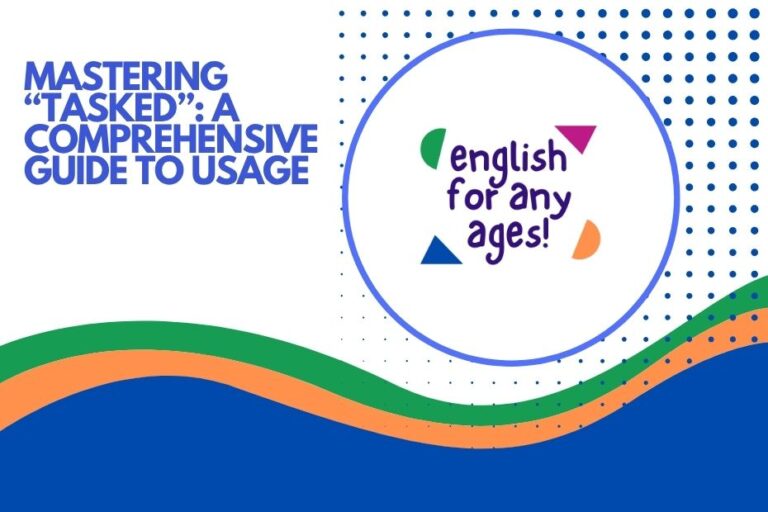Mastering “Facial Expression”: A Comprehensive Guide
Understanding and correctly using the term “facial expression” is crucial for effective communication in English. It allows us to describe non-verbal cues that convey emotions, intentions, and attitudes.
This article provides a detailed exploration of “facial expression,” covering its definition, grammatical usage, various examples, common mistakes, and advanced applications. Whether you are an English language learner, a writer, or simply someone interested in improving your communication skills, this guide will equip you with the knowledge and confidence to use “facial expression” accurately and effectively.
Table of Contents
- Definition of “Facial Expression”
- Structural Breakdown
- Types and Categories of Facial Expressions
- Examples of “Facial Expression” in Sentences
- Usage Rules for “Facial Expression”
- Common Mistakes
- Practice Exercises
- Advanced Topics
- Frequently Asked Questions
- Conclusion
Definition of “Facial Expression”
A facial expression refers to one or more motions or positions of the muscles beneath the skin of the face. These movements convey emotional states, intentions, or reactions to the person observing. Facial expressions are a crucial form of nonverbal communication, and understanding them is essential for social interaction and interpreting human behavior. They are universal to a certain extent, although cultural differences can influence their interpretation and display. The term “facial expression” typically functions as a noun in a sentence. It can be the subject, object, or part of a prepositional phrase.
In essence, a facial expression is a visual representation of an internal state. It’s the outward manifestation of feelings, thoughts, or reactions, making it a dynamic and informative aspect of human communication.
The complexity of facial expressions stems from the intricate network of facial muscles and the brain’s ability to coordinate these muscles to produce a wide range of expressions.
Structural Breakdown
“Facial expression” is a compound noun, consisting of the adjective “facial” and the noun “expression.” Understanding its structure helps in recognizing its grammatical function within a sentence. Here’s a breakdown:
- Facial: Adjective describing something related to the face.
- Expression: Noun referring to the act of conveying a thought or feeling.
The phrase typically functions as a noun phrase. This means it can be modified by adjectives or function as the head of a larger noun phrase.
It can take singular or plural forms, “facial expressions,” depending on the context.
A deeper understanding of how facial expressions are formed involves the interplay of various facial muscles. The zygomaticus major, for instance, is primarily responsible for smiling, while the corrugator supercilii contributes to frowning.
The subtle and complex coordination of these muscles allows for a vast array of expressions, each conveying nuanced emotional information.
Types and Categories of Facial Expressions
Facial expressions can be categorized based on the emotions they convey or the specific muscle movements involved. Here are some common categories:
Basic Emotions
These are universally recognized expressions associated with fundamental emotions:
- Happiness: Characterized by smiling, raised cheeks, and crinkling around the eyes.
- Sadness: Often involves a downturned mouth, furrowed brow, and drooping eyelids.
- Anger: Typically features a furrowed brow, tightened lips, and flared nostrils.
- Fear: Marked by widened eyes, raised eyebrows, and an open mouth.
- Surprise: Displayed through raised eyebrows, widened eyes, and an open mouth.
- Disgust: Often shown with a wrinkled nose, raised upper lip, and squinted eyes.
Subtle Expressions
These are less intense or fleeting expressions that can indicate underlying feelings or reactions:
- Microexpressions: Very brief, involuntary expressions that reveal concealed emotions.
- Suppressed Expressions: Attempts to hide or control one’s emotional display.
Complex Expressions
These involve a combination of emotions or a more nuanced display:
- Contempt: Often expressed with a raised corner of the mouth.
- Embarrassment: May involve blushing, averting gaze, and a slight smile.
Understanding these categories helps in accurately interpreting nonverbal cues. Recognizing the subtleties of facial expressions can provide valuable insights into a person’s true feelings and intentions, even when their words may suggest otherwise.
Examples of “Facial Expression” in Sentences
The following tables provide various examples of how to use “facial expression” in sentences, categorized by grammatical function. These examples will illustrate the different ways you can incorporate the term into your writing and speech.
“Facial Expression” as a Subject
In this section, “facial expression” acts as the subject of the sentence, performing the action described by the verb.
| Sentence | Explanation |
|---|---|
| Her facial expression betrayed her nervousness. | “Facial expression” is the subject, and it “betrayed” her nervousness. |
| The child’s facial expression clearly showed his disappointment. | The subject “facial expression” reveals the child’s emotion. |
| A genuine facial expression is hard to fake. | “Facial expression” is the subject of the sentence. |
| His facial expression remained neutral throughout the interrogation. | The subject “facial expression” describes his emotional state. |
| The politician’s facial expression changed rapidly as he answered questions. | The subject “facial expression” indicates his shifting emotions. |
| A subtle facial expression can reveal a lot about a person’s true feelings. | “Facial expression” as the subject indicates the revealing nature of micro-gestures. |
| Her facial expression suggested she didn’t believe a word he said. | The subject “facial expression” conveys her disbelief. |
| The actor’s facial expression conveyed a sense of deep sorrow. | “Facial expression” as the subject shows how actors communicate emotion. |
| A confused facial expression often indicates a lack of understanding. | The subject “facial expression” signals confusion. |
| His facial expression was unreadable, making it impossible to guess his thoughts. | “Facial expression” as the subject describes a lack of emotional clarity. |
| The baby’s facial expression shifted from curiosity to delight when she saw the toy. | “Facial expression” as the subject shows a transition in emotion. |
| A forced facial expression often looks unnatural. | “Facial expression” as subject describes artificial emotions. |
| Her facial expression was a mask of polite indifference. | “Facial expression” as the subject suggests hidden emotions. |
| The witness’s facial expression during the testimony was scrutinized by the jury. | “Facial expression” as the subject highlights the importance of nonverbal cues in legal settings. |
| A genuine facial expression is often symmetrical. | “Facial expression” as the subject describes a characteristic of authentic emotions. |
| His facial expression contradicted his words, revealing his true intentions. | “Facial expression” as the subject shows the contrast between words and nonverbal cues. |
| The dog’s facial expression seemed to indicate guilt after chewing the shoe. | “Facial expression” as the subject shows the interpretation of animal emotions. |
| A sincere facial expression can build trust and rapport. | “Facial expression” as the subject highlights the positive impact of genuine emotions. |
| Her facial expression softened as she listened to the heartfelt apology. | “Facial expression” as the subject indicates a change in emotional state. |
| The statue’s facial expression was serene and calming. | “Facial expression” as the subject describes the emotional quality of art. |
| His facial expression gave nothing away; he was a master of poker. | “Facial expression” as the subject illustrates a skill in concealing emotions. |
“Facial Expression” as a Direct Object
In this section, “facial expression” is the direct object of the verb, receiving the action.
| Sentence | Explanation |
|---|---|
| She couldn’t hide her facial expression of surprise. | “Facial expression” is the direct object of “hide.” |
| He studied her facial expression carefully. | “Facial expression” is what he “studied.” |
| The comedian exaggerated his facial expression for comedic effect. | “Facial expression” is what the comedian “exaggerated.” |
| The therapist analyzed her patient’s facial expression to understand their emotions. | “Facial expression” is what the therapist “analyzed.” |
| He masked his facial expression to avoid revealing his true feelings. | “Facial expression” is what he “masked.” |
| She practiced her facial expression in the mirror before the presentation. | “Facial expression” is what she “practiced.” |
| The artist captured her subject’s fleeting facial expression in the portrait. | “Facial expression” is what the artist “captured.” |
| He mimicked her facial expression to tease her. | “Facial expression” is what he “mimicked.” |
| The director wanted to capture the actress’s genuine facial expression on camera. | “Facial expression” is what the director wanted to “capture.” |
| She scrutinized his facial expression for any sign of deception. | “Facial expression” is what she “scrutinized.” |
| The detective observed the suspect’s facial expression during the interrogation. | “Facial expression” is what the detective “observed.” |
| He controlled his facial expression to maintain a poker face. | “Facial expression” is what he “controlled.” |
| She misinterpreted his facial expression, leading to a misunderstanding. | “Facial expression” is what she “misinterpreted.” |
| The doctor noted the patient’s facial expression of discomfort. | “Facial expression” is what the doctor “noted.” |
| He interpreted her facial expression as a sign of agreement. | “Facial expression” is what he “interpreted.” |
| She couldn’t decipher his facial expression, leaving her confused. | “Facial expression” is what she couldn’t “decipher.” |
| The scientist studied the chimpanzee’s facial expression to understand its communication. | “Facial expression” is what the scientist “studied.” |
| He adopted a serious facial expression to convey the importance of the matter. | “Facial expression” is what he “adopted.” |
| She feigned a facial expression of enthusiasm to please her boss. | “Facial expression” is what she “feigned.” |
| The jury watched the defendant’s facial expression intently. | “Facial expression” is what the jury watched. |
| He displayed a facial expression of disbelief upon hearing the news. | “Facial expression” is what he displayed. |
“Facial Expression” in Prepositional Phrases
In this section, “facial expression” is part of a prepositional phrase, adding detail or context to the sentence.
| Sentence | Explanation |
|---|---|
| With a facial expression of joy, she accepted the award. | “Facial expression” is part of the prepositional phrase “with a facial expression of joy.” |
| He spoke with no facial expression, making it hard to read his emotions. | “Facial expression” is part of the prepositional phrase “with no facial expression.” |
| In spite of her calm words, the anger was evident in her facial expression. | “Facial expression” is part of the prepositional phrase “in her facial expression.” |
| The audience reacted with laughter at his exaggerated facial expression. | “Facial expression” is part of the prepositional phrase “at his exaggerated facial expression.” |
| She conveyed her disapproval with a subtle facial expression. | “Facial expression” is part of the prepositional phrase “with a subtle facial expression.” |
| According to his facial expression, he was not pleased with the outcome. | “Facial expression” is part of the prepositional phrase “according to his facial expression.” |
| The message was clear despite the lack of emotion in her facial expression. | “Facial expression” is part of the prepositional phrase “in her facial expression.” |
| He tried to hide his disappointment, but it was betrayed by his facial expression. | “Facial expression” is part of the prepositional phrase “by his facial expression.” |
| The child’s fear was reflected in his facial expression. | “Facial expression” is part of the prepositional phrase “in his facial expression.” |
| With a facial expression of utter confusion, he stared at the instructions. | “Facial expression” is part of the prepositional phrase “with a facial expression of utter confusion.” |
| She responded to the compliment with a grateful facial expression. | “Facial expression” is part of the prepositional phrase “with a grateful facial expression.” |
| He listened to the story with a captivated facial expression. | “Facial expression” is part of the prepositional phrase “with a captivated facial expression.” |
| In his facial expression, she saw a hint of sadness. | “Facial expression” is part of the prepositional phrase “in his facial expression.” |
| The news was delivered with a serious facial expression. | “Facial expression” is part of the prepositional phrase “with a serious facial expression.” |
| Because of his expressive eyes, his facial expression always revealed his thoughts. | “Facial expression” is part of the prepositional phrase “his facial expression.” |
| Despite her attempts to remain stoic, amusement flickered across her facial expression. | “Facial expression” is part of the prepositional phrase “her facial expression.” |
| With a facial expression of intense concentration, he solved the puzzle. | “Facial expression” is part of the prepositional phrase “with a facial expression of intense concentration.” |
| She received the unexpected gift with a facial expression of genuine surprise. | “Facial expression” is part of the prepositional phrase “with a facial expression of genuine surprise.” |
| He conveyed his skepticism with a slight twitch in his facial expression. | “Facial expression” is part of the prepositional phrase “in his facial expression.” |
| The painting captured the subject’s inner turmoil in their facial expression. | “Facial expression” is part of the prepositional phrase “in their facial expression.” |
| With a facial expression of determination, she began the challenging task. | “Facial expression” is part of the prepositional phrase “with a facial expression of determination.” |
Usage Rules for “Facial Expression”
Here are some key rules to follow when using “facial expression” in your writing:
- Singular vs. Plural: Use “facial expression” for a single instance and “facial expressions” for multiple instances or a general reference.
- Adjectives: Use adjectives to describe the type of facial expression (e.g., happy facial expression, subtle facial expression).
- Verbs: Use verbs that accurately describe the action related to the facial expression (e.g., show, betray, reveal, mask).
- Prepositions: Common prepositions used with “facial expression” include with, in, on, by.
It’s also important to consider the context in which you are using the term. For example, in a scientific context, you might discuss the specific muscle movements involved in a particular facial expression.
In a literary context, you might focus on the emotional impact of a character’s facial expression on the reader.
Common Mistakes
Here are some common mistakes to avoid when using “facial expression”:
| Incorrect | Correct | Explanation |
|---|---|---|
| She had a facial express. | She had a facial expression. | “Express” is a verb, not a noun in this context. |
| His face expression was angry. | His facial expression was angry. | “Facial” is the adjective needed to modify “expression.” |
| They all had different facial express. | They all had different facial expressions. | Use the plural form “expressions” for multiple instances. |
| The facial express showed her sadness. | The facial expression showed her sadness. | “Expression” is the correct noun form. |
| He tried to hide his facial expressions but failed. | He tried to hide his facial expression, but he failed. | If referring to a singular, overall display, use singular form. |
Paying attention to these common errors will help you use the term “facial expression” more accurately and confidently. Remember to proofread your writing carefully to catch any mistakes.
Practice Exercises
Test your understanding of “facial expression” with these exercises:
Exercise 1: Sentence Completion
Complete the following sentences with an appropriate word or phrase related to “facial expression.”
| Question | Answer |
|---|---|
| 1. Her __________ showed her true feelings despite her words. | facial expression |
| 2. He tried to __________ his __________ to hide his disappointment. | mask, facial expression |
| 3. The baby’s __________ changed from curiosity to laughter. | facial expression |
| 4. With a __________, she accepted the apology. | facial expression of forgiveness |
| 5. The detective carefully observed his __________. | facial expression |
| 6. A genuine __________ is often symmetrical. | facial expression |
| 7. She conveyed her anger with a subtle __________. | facial expression |
| 8. His __________ gave nothing away during the poker game. | facial expression |
| 9. The therapist analyzed her patient’s __________. | facial expression |
| 10. The witness’s __________ was scrutinized by the jury. | facial expression |
Exercise 2: Error Correction
Identify and correct the errors in the following sentences.
| Incorrect Sentence | Correct Sentence |
|---|---|
| 1. She had a facial express of surprise. | She had a facial expression of surprise. |
| 2. His face expression showed anger. | His facial expression showed anger. |
| 3. They all had different facial express. | They all had different facial expressions. |
| 4. The facial express showed her sadness. | The facial expression showed her sadness. |
| 5. He tried to hide his facial expressions but failed because it was only one emotion. | He tried to hide his facial expression but failed. |
| 6. With no emotion he had a blank face expression. | With no emotion he had a blank facial expression. |
| 7. The dog’s facial express seemd guilty. | The dog’s facial expression seemed guilty. |
| 8. Her faceial expression was unreadable. | Her facial expression was unreadable. |
| 9. She captured the moment with a facial expressive. | She captured the moment with a facial expression. |
| 10. He study her face expressions. | He studied her facial expressions. |
Exercise 3: Sentence Construction
Write sentences using “facial expression” in the following contexts:
- Describing someone’s reaction to good news.
- Explaining how a character in a book felt.
- Analyzing a politician’s nonverbal communication.
- Describing an actor’s performance.
- Explaining how to interpret someone’s feelings.
Example answers:
- Her facial expression lit up with joy when she heard the good news.
- The character’s facial expression revealed a deep sense of sadness and longing.
- The politician’s tense facial expression suggested he was uncomfortable with the question.
- The actor’s subtle facial expression conveyed a range of emotions without a single word.
- By observing someone’s facial expression, you can often gain insight into their true feelings, even if they try to hide them.
Advanced Topics
For advanced learners, here are some more complex aspects of “facial expression”:
- Cultural Variations: Facial expressions can be interpreted differently across cultures. Understanding these variations is crucial for effective cross-cultural communication.
- Microexpressions: These fleeting expressions can reveal concealed emotions and are often studied in fields like law enforcement and psychology.
- Facial Action Coding System (FACS): This is a comprehensive system for classifying and measuring facial movements, used in research and clinical settings.
- Theories of Emotion: Explore different psychological theories about the relationship between emotions and facial expressions, such as the James-Lange theory or the Facial Feedback Hypothesis.
Delving into these advanced topics will provide a deeper understanding of the complexities of facial expressions and their role in human communication and behavior.
Frequently Asked Questions
Here are some frequently asked questions about “facial expression”:
- What is the difference between a facial expression and a gesture?
A facial expression involves movements of the facial muscles to convey emotion or meaning, while a gesture involves movements of the body, such as hands or arms, to communicate or emphasize a point. Facial expressions are primarily focused on the face, whereas gestures involve broader body movements.
- Are facial expressions universal?
While some basic facial expressions, such as those for happiness, sadness, anger, fear, surprise, and disgust, are generally recognized across cultures, there are also cultural variations in the display and interpretation of facial expressions. Cultural norms can influence how emotions are expressed and perceived.
- Can someone fake a facial expression?
Yes, people can consciously control their facial muscles to create a desired expression. However, genuine emotions often produce more natural and symmetrical expressions, whereas faked expressions may appear forced or unnatural. Microexpressions, which are brief, involuntary expressions, can sometimes reveal underlying emotions despite attempts to conceal them.
- How can I improve my ability to read facial expressions?
Practice observing people’s faces in various contexts, paying attention to subtle changes in their expressions. Study resources on facial expressions and emotions, and consider taking courses or workshops on nonverbal communication. The more you practice, the better you will become at recognizing and interpreting facial expressions.
- What is the significance of facial expressions in communication?
Facial expressions play a crucial role in nonverbal communication, conveying emotions, intentions, and reactions. They can reinforce or contradict verbal messages, provide context, and help build rapport. Understanding facial expressions is essential for effective social interaction and interpreting human behavior.
- How do computers recognize facial expressions?
Computers can recognize facial expressions through algorithms that analyze facial features and movements. These algorithms are trained on large datasets of images and videos of faces expressing various emotions. The computer identifies patterns and uses them to classify facial expressions in new images or videos. This technology is used in applications such as emotion recognition software, security systems, and human-computer interaction.
- Are there any medical conditions that affect facial expressions?
Yes, several medical conditions can affect facial expressions, including Bell’s palsy, stroke, Parkinson’s disease, and certain neurological disorders. These conditions can cause facial muscle weakness, paralysis, or involuntary movements, which can alter or impair a person’s ability to express emotions through facial expressions.
- How do facial expressions differ between humans and animals?
While animals also use facial expressions to communicate, the range and complexity of these expressions are generally less developed than in humans. Some animals, such as primates, share similar facial expressions with humans, but others have distinct patterns. The interpretation of animal facial expressions requires careful observation and understanding of their behavior in context.
Conclusion
Mastering the use of “facial expression” in English enhances your ability to communicate effectively and understand nonverbal cues. This comprehensive guide has covered the definition, structural breakdown, types, examples, usage rules, common mistakes, and advanced applications of the term.
By understanding the nuances of facial expressions and practicing their correct usage, you can improve your writing, speaking, and overall communication skills.
Remember that continuous practice and observation are key to mastering any grammar concept. Pay attention to how native speakers use “facial expression” in different contexts, and don’t be afraid to experiment with your own writing and speech.
By doing so, you will develop a deeper understanding of the English language and become a more confident and effective communicator.






